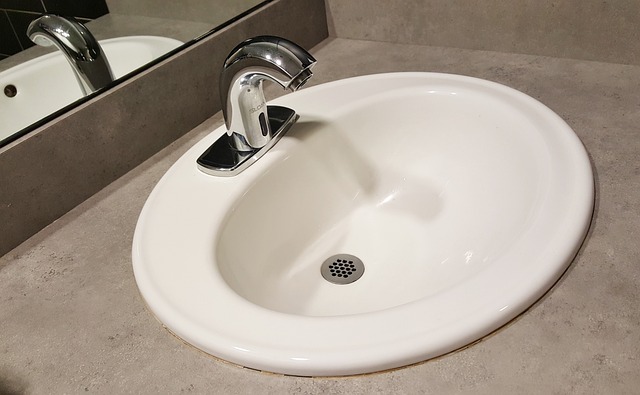Snaking a drain is one of the most effective methods for clearing clogs in your plumbing system. Whether you’re dealing with a slow-draining sink or a completely blocked toilet, a plumbing snake can help restore proper water flow. This guide covers everything you need to know about snaking a drain, including the tools required and how to use them effectively.
Read about Tub Faucet Leaking here!
Tools for Snaking a Drain
There are several types of tools used for snaking a drain, each designed for specific applications:
- Plumbing Snake
A general-purpose tool, the plumbing snake is suitable for clearing minor clogs in sinks, bathtubs, and showers. - Toilet Snake
Designed for toilets, this tool is often coated to prevent damage to porcelain. It is effective for clearing clogs without the need for harsh chemicals. - Toilet Auger
A more advanced version of the toilet snake, a toilet auger is ideal for tough clogs. Its extendable cable can reach deeper into the toilet’s trap. - Drain Auger
Similar to a plumbing snake, the drain auger is designed for medium-sized pipes and is commonly used for sinks and bathtubs. - Sewer Snake
A sewer snake is a heavy-duty tool used to clear blockages in the main sewer line. It is typically longer and more powerful than other drain snakes. - Snake Drain Cleaner
This term refers to any snake tool used to clean drains and remove obstructions like hair, grease, or debris.
Steps for Snaking a Drain
- Identify the Clogged Drain
Determine which drain is clogged and access the pipe by removing the stopper or cover. - Select the Right Tool
Choose a plumbing snake or specific tool like a toilet snake or drain auger based on the type of clog and its location. - Insert the Snake
Carefully feed the snake into the drain opening. Rotate the handle to guide the snake through the pipe, navigating bends as necessary. - Engage the Clog
When you feel resistance, you’ve likely reached the clog. Rotate the snake to break up or latch onto the obstruction. - Remove the Snake
Slowly retract the snake, bringing the clog out of the drain. Dispose of the debris properly. - Flush the Drain
Run water through the drain to ensure it is clear. If the clog persists, repeat the process or use a more powerful tool like a sewer snake.
Benefits of Using a Plumbing Snake
- Cost-Effective
Snaking a drain is an affordable solution compared to hiring a professional plumber. - Eco-Friendly
Unlike chemical drain cleaners, plumbing snakes are safe for the environment and won’t damage your pipes. - Versatile
Plumbing snakes can handle various types of clogs, from hair and soap buildup to food particles.
When to Use a Sewer Snake
A sewer snake is the go-to tool for serious blockages in the main sewer line. Signs that you may need a sewer snake include:
- Multiple drains in your home are clogged simultaneously.
- Water backs up into other fixtures, like the bathtub filling when you flush the toilet.
- Persistent odors of sewage in your home.
Sewer snakes are powerful and often motorized, making them suitable for deep, stubborn blockages.
Toilet Snake vs. Toilet Auger
While both tools are designed for clearing clogs in toilets, there are differences:
- A toilet snake is a basic tool for minor clogs.
- A toilet auger is more advanced and features an extendable cable for deeper clogs.
If a toilet snake doesn’t resolve the issue, upgrading to a toilet auger may be necessary.
Tips for Effective Drain Snaking
- Avoid Forcing the Snake
Forcing the snake can damage your pipes or the tool. If you encounter a blockage you can’t clear, consult a professional plumber. - Clean the Snake After Use
Rinse the snake thoroughly after use to prevent rust and prolong its lifespan. - Use Proper Protective Gear
Wear gloves and safety glasses to protect yourself from debris and bacteria. - Know When to Call a Plumber
If snaking a drain doesn’t resolve the issue, a professional plumber may need to inspect your pipes for damage or deeper blockages.
Maintaining Clear Drains
Regular maintenance can prevent clogs and reduce the need for snaking a drain:
- Use Drain Covers
Install covers to catch hair, food particles, and other debris before they enter the pipes. - Avoid Pouring Grease Down Drains
Grease can solidify and cause blockages. Dispose of it in the trash instead. - Flush Drains with Hot Water
Periodically pour hot water down your drains to dissolve soap scum and grease.
Conclusion
Snaking a drain is a practical and efficient way to handle clogs in your plumbing system. Whether it’s a leaking toilet snake or a stubborn clog in your main sewer line, knowing how to choose and use the right tool can save you time and money. Regular maintenance and proper use of drain tools will ensure your plumbing system remains clog-free and functional.
